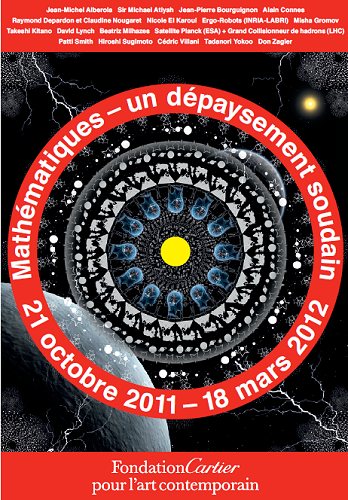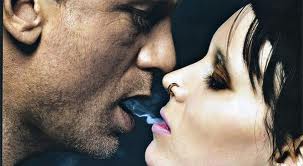This is a tough movie!
As this is an authentic tragedy. Yet it is not Love Story.
You won't cry tears at Kevin, and if you do,
it will be because the thought of what happens is just too painful to contemplate.
You'll cry as this film has a lot of truth in it,
as well as one of the most dazzling performances.
As this is an authentic tragedy. Yet it is not Love Story.
You won't cry tears at Kevin, and if you do,
it will be because the thought of what happens is just too painful to contemplate.
You'll cry as this film has a lot of truth in it,
as well as one of the most dazzling performances.
Tilda Swinton plays Eva, a travel writer married to Franklin (John C. Reilly).
In the early scenes, we can see that many people in her town hate her,
and that she seemingly hates herself.
The reasons for this are not initially clear,
although it seems to have something to do with her son Kevin.
Then the film flashes back to his early childhood.
Eva, perhaps somehow not in possession of the motherhood gene, couldn't stand her newborn crying baby. His constant crying drove her mad.
In the early scenes, we can see that many people in her town hate her,
and that she seemingly hates herself.
The reasons for this are not initially clear,
although it seems to have something to do with her son Kevin.
Then the film flashes back to his early childhood.
Eva, perhaps somehow not in possession of the motherhood gene, couldn't stand her newborn crying baby. His constant crying drove her mad.
Then, as a toddler, Kevin refused to respond to her.
In frustration, she distanced herself.
In frustration, she distanced herself.
As a teen, Kevin stands openly hostile to her, often irritating. He has deeply anti-social tendencies.
Franklin doesn't see it, which leads to conflict with Eva.
At the end, the exact nature of Kevin's issue is revealed...
Franklin doesn't see it, which leads to conflict with Eva.
At the end, the exact nature of Kevin's issue is revealed...
We Need to Talk About Kevin asks a very uncomfortable question:
What would you do if you honestly didn't like your own child?
What would you do if you honestly didn't like your own child?
That idea may sound inconceivable to you.
It does to me as well.
However, I know people who feel that way about their kids.
You probably do too.
It happens.
It does to me as well.
However, I know people who feel that way about their kids.
You probably do too.
It happens.
Perhaps due to some personality issues of her own,
Eva was never able to bond with her son.
Eva was never able to bond with her son.
The film tracks the isolation
and regret she feels.
Eva is in a perpetual state of confusion:
she really thinks Kevin has grown up to be a jerk,
yet she also feels the burden of responsibility for the person he's become.
Watching the story unfold is a devastating experience.
It made me very aware of my own parenthood;
it made me recognize that my mistakes will directly impact my child,
setting the course he'll take for the rest of his life.
Few movies have ever suggested exactly how much hangs in the balance during childhood...
It made me very aware of my own parenthood;
it made me recognize that my mistakes will directly impact my child,
setting the course he'll take for the rest of his life.
Few movies have ever suggested exactly how much hangs in the balance during childhood...
Tilda Swinton is magnificent,a very expressive actress.
Her eyes haunt a world of emptiness and hurt,
as her character realizes that Kevin's lack of empathy
is a reflection of her own.
Her eyes haunt a world of emptiness and hurt,
as her character realizes that Kevin's lack of empathy
is a reflection of her own.
Kevin is played by several actors at different ages,
but Ezra Miller (as the teenage) is totally chilling.
There's an unspoken yet palpable battle between the mother and son. Miller is a solid adversary for Swinton,
that gives the film its most disturbing edge.
but Ezra Miller (as the teenage) is totally chilling.
There's an unspoken yet palpable battle between the mother and son. Miller is a solid adversary for Swinton,
that gives the film its most disturbing edge.
Director Lynne Ramsay uses fractured time narrative
to create a sense of unease. Kevin's growth is intertwined with present-day scenes of Eva struggling to cope.
This approach gives the movie a really nightmarish feel.
Ramsay does a brilliant job evoking a tragic tone
in a movie loaded
with ambiguity.
to create a sense of unease. Kevin's growth is intertwined with present-day scenes of Eva struggling to cope.
This approach gives the movie a really nightmarish feel.
Ramsay does a brilliant job evoking a tragic tone
in a movie loaded
with ambiguity.
Most movies present parenthood as a triumph or,
at worst,
a learning experience.
at worst,
a learning experience.
This one shows the darker side of things, t
he side in which mistakes
lead to horrible consequences.
Eva was not a good mother to her son.
She figures that out way too late.
This powerful,
provocative movie
breaks your heart
and sends chills up your spine...
by Giulia Ghica Dobre
provocative movie
breaks your heart
and sends chills up your spine...
by Giulia Ghica Dobre











































